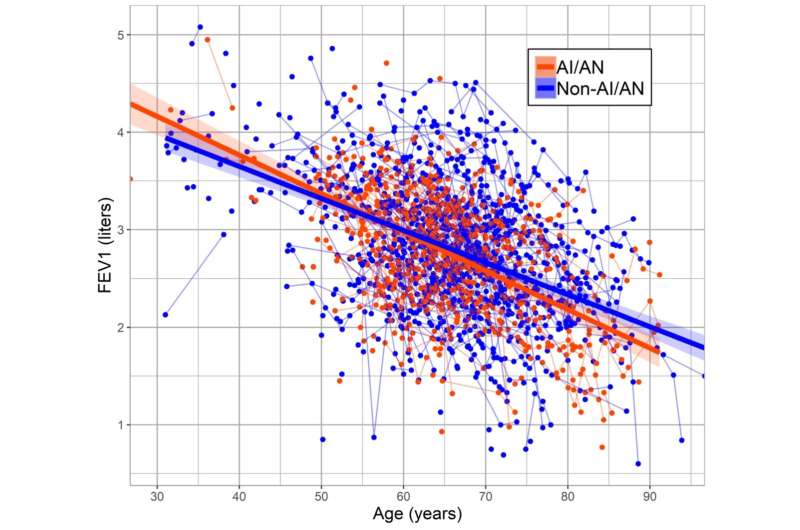This article has been reviewed according to Science X's editorial process and policies. Editors have highlighted the following attributes while ensuring the content's credibility:
fact-checked
trusted source
proofread
Doctors identify health disparities for Indigenous coal miners with black lung disease

Researchers at National Jewish Health found that Indigenous coal miners may develop disabling black lung disease but are less likely to qualify for medical benefits using currently required lung function standards rather than standards specific to Indigenous populations.
Black lung (also called coal worker's pneumoconiosis) is a debilitating respiratory illness that can occur several decades after a miner's first exposure to coal mine dust. Disease severity can be influenced by adequacy of dust controls, medical surveillance programs for early disease detection, choice of lung function standards to define "abnormal," and other risk factors such as tobacco smoking.
Because Indigenous populations face numerous health disparities, researchers also wanted to assess if they face barriers to federal compensation for black lung disease.
"Racial disparities in access to benefits for work-related lung disease need to be addressed as updated lung function standards are being implemented," said Jeremy Hua, MD, MPH, lead author of the study and pulmonologist and occupational/environmental physician at National Jewish Health.
Over the past 16 years, doctors at National Jewish Health have provided free yearly medical screenings for work-related lung disease as part of a Miners Clinic in Page, Arizona. This part of the country has a substantial proportion of Indigenous coal miners, and approximately 30% of coal reserves west of the Mississippi River are on native lands.
Research recently published in the journal Annals of the American Thoracic Society examines how lung function testing results may vary, depending on which standards are used to define what is normal versus abnormal. Investigators also explored how many of the participating coal miners had chest X-ray findings of black lung.
"We found that, for each decade of life, Indigenous coal miners were more likely to have both black lung and lung function impairment than non-Indigenous coal miners," said Cecile Rose, MD, MPH, senior author of the study, and pulmonologist and occupational/environmental physician at National Jewish Health. Dr. Rose emphasized that, based on the study findings, "more efforts are needed to understand and prevent black lung and other respiratory diseases affecting Indigenous workers."
More information: Jeremy T Hua et al, Racial Differences in Respiratory Impairment, Pneumoconiosis, and Federal Compensation for Western U.S. Indigenous Coal Miners, Annals of the American Thoracic Society (2023). DOI: 10.1513/AnnalsATS.202305-496OC. www.atsjournals.org/doi/abs/10 … nalsATS.202305-496OC




















